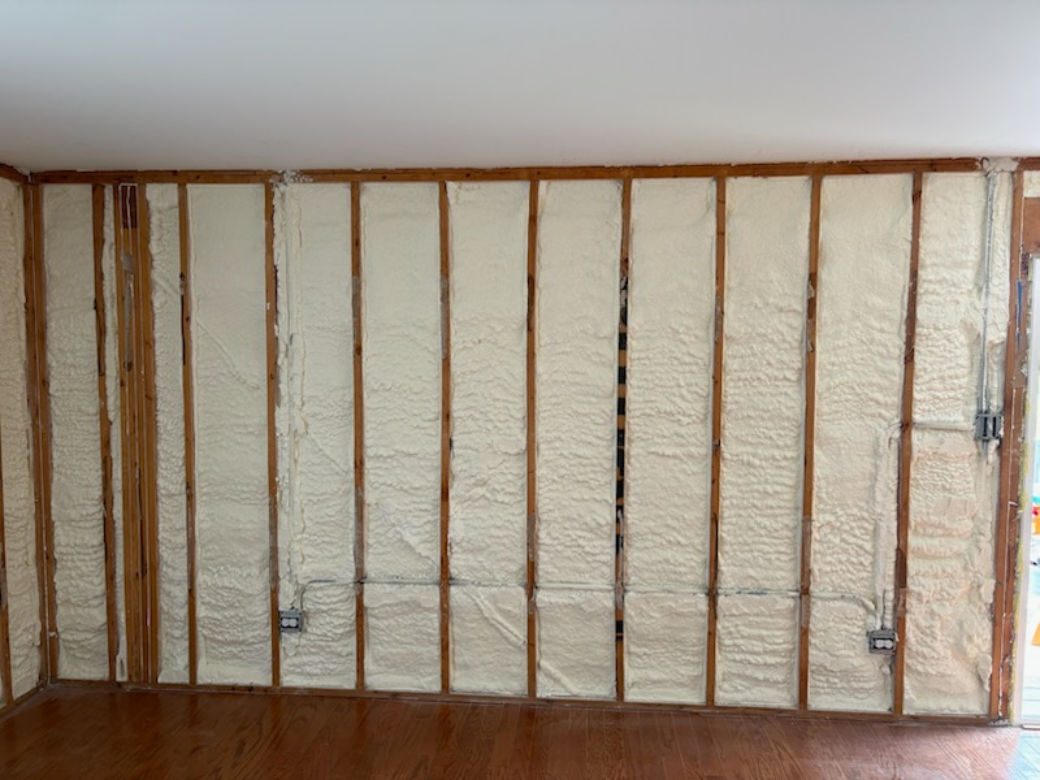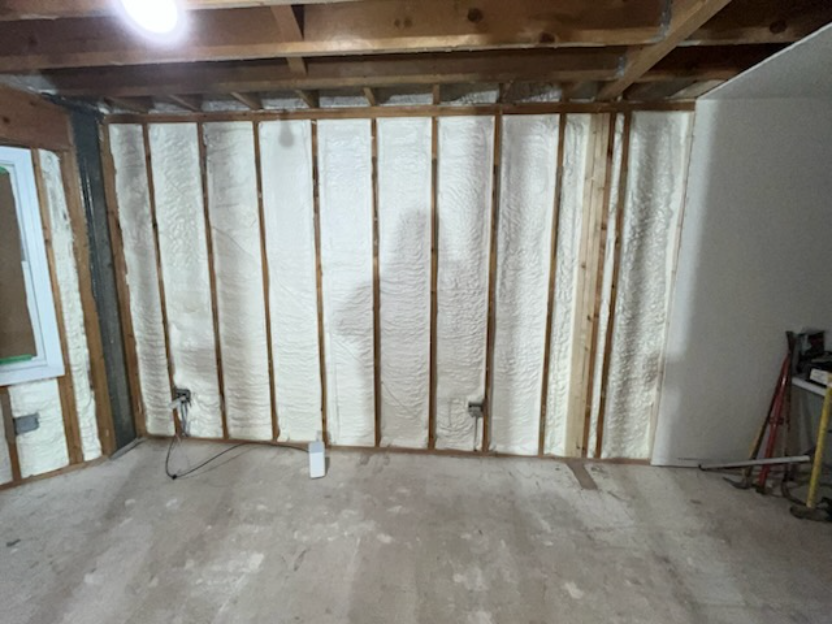
Spray foam insulation stands out as a premium choice because it delivers top-tier thermal performance and seals air leaks better than traditional materials. This insulation expands to fill gaps, creating a continuous barrier that blocks heat transfer and drafts. In practical terms, it achieves higher R-values per inch, meaning less material handles more insulation power. For homes in variable climates like Chicago’s, where winters drop below freezing and summers hit the 90s, this setup keeps indoor temperatures steady and cuts energy use.
This article breaks down the reasons behind its high-performance status, from material science to real-world results. Readers will learn how spray foam compares to other options and what factors influence its value. Information here draws from hands-on work with installations across the Midwest, ensuring reliable guidance based on observed outcomes in local conditions.
Spray foam forms from two chemicals that mix and expand on site, turning into a dense foam. Open-cell versions feel softer and allow some moisture vapor to pass, while closed-cell types create a harder, vapor-resistant layer. Both outperform standard fiberglass batts by adhering directly to surfaces, which prevents settling or gaps over time.
Thermal resistance measures how well a material blocks heat flow, and spray foam excels here. A U.S. Department of Energy guide notes that closed-cell spray foam reaches R-6 to R-7 per inch, compared to R-3.1 to R-4.3 for fiberglass. This efficiency suits tight spaces like attics or walls, where adding thickness proves tough.
Air sealing ranks as another strength. Unlike loose-fill cellulose that shifts, spray foam locks in place and stops conditioned air from escaping. Data from the Oak Ridge National Laboratory shows installations reduce air leakage by up to 75% in tested homes, leading to lower heating and cooling bills.
These properties prove especially valuable in challenging climates, such as harsh winters in the Chicago region, where spray foam handles freeze-thaw cycles without cracking. Its expansion fills irregular shapes around pipes and wires, something rigid boards often miss. Installers notice it maintains performance even when temperatures fluctuate, which matters during Midwest cold snaps.
Moisture management adds to its appeal. Closed-cell foam repels water, reducing mold risk in humid basements. According to a Building Science Corporation report, this property prevents condensation buildup, a common issue in older homes exposed to lake-effect humidity.
Market data backs the performance claims. The global spray foam insulation market grew to $8.4 billion in 2022, driven by demand for energy-efficient building materials, as reported by Grand View Research. Homeowners in cold climates report average annual energy savings of 15-20% after retrofits, per Energy.gov studies on insulation upgrades.
To see why spray foam earns its premium label, consider this table comparing common options based on key metrics:
| Insulation Type | R-Value per Inch | Air Sealing Ability | Moisture Resistance | Typical Cost per Sq. Ft. (Installed) |
|---|---|---|---|---|
| Fiberglass Batts | 3.1 – 4.3 | Low (gaps common) | Poor | $0.90 – $1.50 |
| Cellulose Loose-Fill | 3.2 – 3.8 | Moderate | Good (absorbs then releases) | $1.00 – $1.80 |
| Closed-Cell Spray Foam | 6.0 – 7.0 | Excellent (seals fully) | High (vapor barrier) | $2.50 – $3.50 |
| Open-Cell Spray Foam | 3.6 – 4.0 | Excellent | Moderate (breathable) | $1.50 – $2.50 |
This table highlights trade-offs. While spray foam costs more upfront, its superior metrics justify the investment for long-term efficiency.
Spray foam lasts decades without degrading, unlike foam boards that can warp. Field tests reveal it retains over 90% of its R-value after 20 years, according to Insulation Institute data. This stability means fewer repairs and consistent performance, contributing to substantial energy savings over time.
A typical Chicago home might save $300-500 yearly on utilities after adding spray foam to the attic, based on local utility rate calculations and EIA consumption averages. These figures come from monitoring projects where pre- and post-installation meter readings showed clear drops in usage.
Bonus Tip: During installation, ensure surfaces stay dry to maximize adhesion. Wet conditions can weaken the bond, leading to future issues in damp crawl spaces.

Assess the home’s current setup first. Older structures may need structural checks to handle the foam’s expansion pressure. Climate plays a role too; in humid zones, closed-cell suits better to block vapor drive.
Budget factors in installation complexity. Professionals use specialized equipment, so costs rise for hard-to-reach areas like rim joists. Weigh this against potential rebates from programs like those from Illinois Energy, which offset expenses for qualifying upgrades.
Environmental impact matters. Spray foam contains chemicals like HFCs, which have global warming potential. Look for low-GWP alternatives now available from some manufacturers to align with sustainability goals.
Bonus Tip: Check local building codes before starting. Chicago-area rules often require specific ventilation setups with spray foam to maintain indoor air quality.
Installation requires protective gear and controlled spraying to ensure even coverage and avoid over-expansion. While the foam cures within hours, full hardness develops over several days.
When installed correctly, spray foam emits no ongoing VOCs after curing, making it safe for occupied spaces. Certifications such as GREENGUARD confirm low emissions and indoor air quality safety.
Bonus Tip: Ventilate the area well during and right after application to speed up off-gassing and ensure occupant comfort.
Yes, it retrofits effectively by injecting into cavities through small holes. This method seals older walls without major demolition, preserving historic features in Chicago bungalows.
Spray foam adheres better and fills voids that boards leave exposed. While boards install quickly, spray foam’s custom fit boosts overall efficiency by 10-15% in irregular spaces.
It adapts well, but select the type based on humidity. Open-cell breathes in dry areas, while closed-cell protects against moisture in wetter ones like the Great Lakes region.
Spray foam meets Class A fire ratings when paired with proper coverings. It doesn’t ignite easily and slows flame spread compared to untreated cellulose.
The dense structure absorbs sound waves, reducing outside noise by up to 50% in tests. This benefit shines in urban settings near busy streets.
Spray foam earns its premium status through unmatched sealing, insulation power, and durability. It delivers real energy savings and comfort in demanding weather. Evaluate personal needs, like home age and local climate, to see if it fits long-term plans. Consider consulting experts to match it to specific goals for best results.
For detailed advice on spray foam in the Chicago area, reach out to South Chicago Insulation. Send questions to [email protected] or call (779) 803-8025. Staff can discuss project suitability based on home details and provide quotes tailored to local conditions. This step helps clarify next moves without commitment. (78 words)